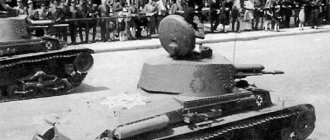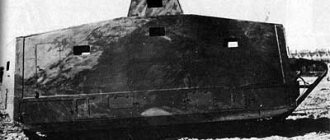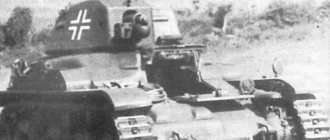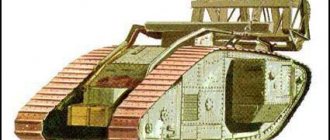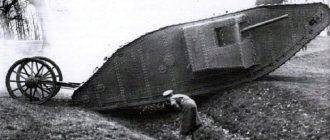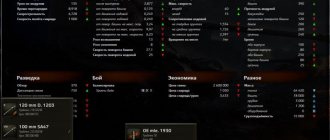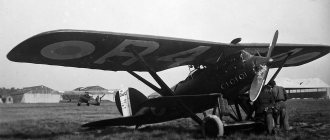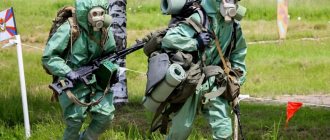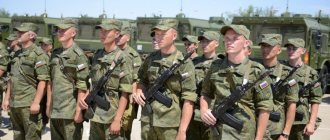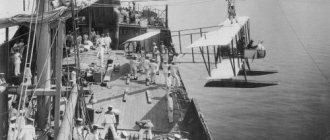SA-1 "Schneider": the first French tank
SA-1 "Schneider" is a French assault tank from the First World War. It became the first French tank in history and one of the first production tanks in the world. It was created as a kind of analogue to the first English tank of the Mark 1 type, well known for its diamond-shaped hull. The SA-1 tank was mass-produced from 1916 to 1917, during which time the French managed to assemble about 400 of these combat vehicles. From a modern perspective, the SA-1 Schneider could be classified as an assault gun rather than a tank. At the origins of tank building in France was Colonel (later General) J. B. Etienne. Like his contemporary, the Englishman Swinton, he initially turned his attention to the high cross-country ability of the American Holt tractors; in this regard, he had the idea to develop a combat tracked vehicle based on this tractor. Already on December 1, 1915, Etienne wrote a letter addressed to the commander-in-chief of the French troops, J. Joffre, in which he proved the feasibility of building “land battleships.” On December 12 of the same year, Colonel Etienne was received at the General Staff of the French Army personally by the commander-in-chief and was able to enlist his support.
Having secured support from the top leadership of the French army, Etienne turns for technical assistance to the famous designer and owner of the automobile company of the same name, Louis Renault. However, Renault refuses to participate in the project to develop the tank, citing his workload with current military orders and his lack of experience in creating such vehicles. After the failure with Renault, Etienne decides to approach Schneider with a proposal to build a tank. This company at that time was one of the largest arms manufacturers. Moreover, back in January 1915, the engineers of this company were able, under the leadership of E. Brillet, to convert the American Holt tractor into an artillery tractor.
Here Etienne finds understanding; on December 20, Etienne and Brillet discussed details regarding the development of the future tank, and two days later the general design of the future vehicle was ready. The final design of the future tank was submitted to the French General Staff a few weeks later and was approved on January 31, 1916. The military decided to place an order for the construction of 400 of these combat vehicles, while simultaneously starting a detailed study of their future combat use.
The Schneider tank received the index CA-1, which meant Char d'Assault - a support tank or assault tank of the first model. In order to try out all the innovations, Brillet initially built a prototype armored tractor on the Holt chassis. During testing, this vehicle seemed insufficiently reliable to the French military; members of the commission noted its insufficient maneuverability and mobility. During repeated tests, which were carried out on February 21, 1916, an extended chassis was presented, but Brillet himself had already decided to abandon the tractor chassis. It was a smart decision. At the same time, he used elements of a blocked spring suspension in the new chassis. So the SA-1 Schneider tank was not a “conversion of a tractor into a tank,” as is sometimes presented in modern literature. But the “tractor” past still left its heavy mark on the first-born of French tank building.
Its design was somewhat reminiscent of the British tank "No. 1 Lincoln" or "Little Willie", which was built on the chassis of an ordinary American Holt tractor. But French engineers were clearly ahead of their British allies. The hull of the SA-1 Schneider tank was assembled on a rectangular frame so that it was located above the chassis. The rigid frame was formed by two longitudinal beams with transverse fastenings. Rolled armor plates 11 mm thick were assembled onto the frame using riveting. The layout of the first French tank turned out to be so original that it was never repeated anywhere else or by anyone.
A 4-cylinder Schneider or Renault carburetor engine was installed on the left front of the tank hull, its rated power was 40 hp, and its maximum power was 65 hp, the maximum engine speed was 1200 per minute. The engine was equipped with a liquid cooling system, as well as automatic lubrication. There was a radiator in front of the engine, and it was also equipped with a fan. Fuel tanks with a total capacity of 160 liters were located under the power plant and covered with armor. Fuel could be supplied to the engine either forcibly (using a pulsator that supplied exhaust gases from the engine) or using a hand pump.
In the front part of the hull, on the right side, almost exactly along the longitudinal axis of the tank, there was a place for the driver with controls, who was also the commander of the combat vehicle. For observation, he could use a viewing window with a folding armored shutter, which had three viewing slits. Since there was practically no space left for mounting the 75-mm gun, they decided to install it in a sponson located in the beveled side plate in order to somehow provide the tank with acceptable firing angles from the gun. At the same time, the horizontal pointing angle of the gun still did not exceed 40 degrees. In order to improve the cross-country ability of the combat vehicle, a “bowsprit” was made in the bow. The bow of the tank received a pointed outline with a characteristic beam for overcoming wire obstacles. This feature finally gave the new combat vehicle a resemblance to “land battleships.”
On the sides of the tank in the middle part of the hull, in installations covered with hemispherical shields, there were two 8-mm Hotchkiss machine guns of the 1914 model (one per side). The maximum rate of fire of these machine guns was 600 rounds/min. The fire from the right machine gun had to be conducted by a special machine gunner, and the left one was fired by a mechanic who also monitored the operation of the tank engine. The crew entered the tank through a special double door, which was located in the rear hull. At the same time, the driver could also leave the tank through the top hatch, which was located in the roof of the commander’s cabin. A “tail”, standard for tanks of that period, could also be installed in the stern, which allowed the vehicle to overcome trenches whose width did not exceed 1.8 meters.
The 75 mm gun mounted on the tank had a special design. It was a gun with a wedge breech and a barrel length of only 13 calibers. It was fired using ordinary shots from a field gun of the same caliber, but with a reduced charge. The target firing range from it was only 600 meters, and the effective range was even less - 200 meters. At the same time, the initial speed of a 7.25-kilogram projectile of 200 m/s was quite enough to successfully deal with light enemy fortifications, such as wooden dugouts, at a short distance. The 75-mm gun was fired by the assistant commander, behind whom there was ammunition consisting of 90 shells.
The chassis of the SA-1 tank consisted (on each side) of two bogies: the front bogie carried 3 double road wheels, the rear bogie - 4. The steering wheel axis with a screw mechanism for tensioning the tank tracks was attached to the front bogie fork. The caterpillar directly consisted of 34 fairly large tracks, which consisted of one cushion and two rails along which support rollers with flanges rolled. The drive wheel was located at the rear; it had tooth engagement with the track joint. The total length of the track rim was 3 meters, and the length of the supporting surface was only 1.8 meters. The tank transmission consisted of a three-speed gearbox with reverse, which made it possible to vary the speed in the range from 2 km/h to 8 km/h and a differential turning mechanism. At the same time, the speed of a tank on a highway at 8 km/h seems today too optimistic and is unlikely to exceed 4 km/h in practice.
According to the developed plan for the serial production of SA-1 "Schneider" tanks, the entire batch of 400 combat vehicles had to be delivered to the army by November 25, 1915. However, it was simply impossible to fulfill such a large order for a completely new type of equipment in such a short time. The first tank was delivered to the military only on September 8, 1916, and deliveries of the remaining combat vehicles were fully completed already in 1917. At the same time, the French military began to form their tank units and train tank crews even earlier, without waiting for the construction of even the first copy. Already in mid-August 1916, the first tank cadets began to arrive at the initial training center, which was located in the area of Fort Marly-le-Roi. As a result, they spent 6 months less time than the British, from the moment the factory issued the order to the first use of the tanks.
For their tank units, the French military decided to take the artillery organization as a basis, dividing the combat vehicles into separate batteries. It was initially planned that each of them would have 8 tanks, but their number was soon reduced to 4. Three batteries formed a tank group, which was called a division. Each group received an AS index (assault artillery) and a corresponding serial number. At first, the French planned to use the SA-1 Schneider tanks in their divisions together with their second Saint-Chamon tank, but quickly abandoned this idea.
The first division, fully equipped with Schneider tanks, was completed from December 1 to December 25, 1916, and by April 1917, the total number of such combat vehicles was brought to 208. This made it possible to fully equip 15 groups with them (AS1 - AS15). Each French division had three batteries of 4 tanks, a mechanized repair and supply unit (SSR), and several reserve combat vehicles. In total, the division had 16 tanks, 18 officers and 73 non-commissioned officers and soldiers.
The combat debut of French tanks came on April 16, 1917. In April, the French developed a plan for an offensive in the area of the En River with the forces of the 5th and 6th armies. This offensive became known as the “Nivelle offensive.” In general, the terrain where the French tanks were to debut was quite passable even for such imperfect first steel monsters. In addition, looking back at the experience of their British allies, the French were going to use tanks in a concentrated manner, throwing a large number of combat vehicles into battle at once. With their help, they were literally going to break through the German defenses. However, when planning the operation, the French made a number of serious miscalculations, which caused the complete failure of the offensive. They concentrated their equipment almost in front of the Germans. German intelligence officers very quickly discovered the locations of French tank units. To top it all off, the artillery shelling that the French carried out for 15 days finally determined the direction of the main attack for the enemy. This knowledge allowed the Germans to prepare anti-tank defenses in the direction of attack, digging wider trenches here and bringing in additional artillery.
The ensuing offensive resulted in a real massacre for the French. The tanks were very quickly spotted by the enemy and came under massive artillery fire. In total, the French were able to throw 132 SA-1 Schneider tanks into battle, which were divided into two groups, commanded by Majors Bossu and Chaubet. At the same time, the Bossu tank group managed to break through only the first line of German defense; out of 82 of its tanks, 44 were destroyed by the Germans, and the tankers jumping out of the tanks were shot from the air by German planes. Bossu himself died in the explosion of a tank that caught fire. Major Shobe's group was unable to achieve any success at all, losing 32 of its tanks on the battlefield.
The greatest complaints of the French tank crews were related to the tank's armament. Since most of the bow section was occupied by the engine and the driver’s workplace, the short-barreled gun had a very limited field of fire. The machine guns mounted on the tank also had large dead zones. The SA-1's armor also turned out to be weak. The tank's armor could be penetrated by new German rifle bullets. Particularly vulnerable to heavy enemy fire were the gas tanks, which were located in the tank body along its sides. The crew could quickly leave the burning tank through a double door in the stern, but the pleasure was dubious. Tankers considered almost the only advantage of the car to be the smooth ride, which was very high, thanks to good shock absorption in the suspension system. High smoothness reduced crew fatigue and increased shooting accuracy.
Despite the catastrophic consequences of the first use of tanks, the French General Staff was not disappointed in the new technology, since tracked combat vehicles would have been able to cope with the task assigned to them if the attack had been carefully planned. Having drawn the appropriate conclusions, during the next offensive using tanks, which took place on May 5, 1917 on the Laffo plateau, the losses of combat vehicles were less. 19 Schneider tanks from AS1 and AS10, as well as 12 Saint-Chémon tanks from AS31 took part in this attack. With the support of French infantry, the tanks managed to capture the Laffaux mill and advance to a depth of 500 meters on a front of 3,200 meters. Such little progress in the offensive was due to the fact that the German defense in this area had a wide ditch and trenches, which tanks could not cross without outside help. During the attack on the near approaches to German positions, 2 tanks were knocked out, another 4 vehicles simply got stuck in soft ground and were then destroyed by German artillery. After the remaining French vehicles returned from the battle, it was discovered that only one SA-1 tank had not received any damage as a result of the attack.
After the end of the First World War, SA-1 Schneider tanks were used mainly as repair and recovery vehicles and tank tractors. Six of them were sold to Spain in 1922. From 1923 to 1926 These tanks were used by the Spaniards in Morocco. The four surviving vehicles were later able to take part in the Spanish Civil War of 1936-1939 on the Republican side. The only surviving tank of this type is today placed in the French Museum of Armored Vehicles in Saumur. Previously, it was kept in the Aberdeen Artillery Museum in the USA, but was donated to the French side for restoration.
Performance characteristics of the SA-1 "Schneider":
Overall dimensions: body length - 6320 mm, body width - 2050 mm, height - 2300 mm, ground clearance - 400 mm. Combat weight - 14.6 tons. Reservation: front, sides and rear of the hull - 11.4 mm, bottom and roof of the hull - 5.4 mm. Travel speed on the highway is 4 km/h, on rough terrain - 2 km/h. Cruising range on the highway is 45 km, over rough terrain - 30 km. The power plant is a liquid-cooled Schneider/Renault four-cylinder carburetor engine with a power of 65 hp. Armament - 75 mm short-barreled cannon, 2x8 mm machine gun. Ammunition - 90 shells. Crew - 6 people.
Sources of information: https://www.aviarmor.net/tww2/tanks/france/schneider_ca1.htm https://www.tankovedia.ru/catalog/franciya/tank__shneider_ca_1 https://www.wotanks.com/wikitanks/france -tanks/106-schneider-tank.html Materials from open sources
Background
Everyone knows that the construction of tanks as such began during the First World War. France was the second country to use tanks on the battlefield.
The very first French tank was completely ready in September 1916. Its creator was J. Etienne, who, in fact, is considered the founding father of French tank building. This officer was the chief of staff of an artillery regiment. He understood perfectly well how the situation at the front could be changed, and therefore he thought through breaking through the first line of enemy defense with the help of tracked vehicles. After which he planned to install artillery in the captured territory and suppress enemy resistance from this position. An important remark should be made here: the armored vehicles that we call tanks were called “assault artillery tractors” by the French in those days.
Start of production
The top command staff of France, like most military commanders of other countries at that time, was extremely wary and skeptical about the idea of building a tank. However, Etienne was persistent and had the support of General Joffe, thanks to which permission was obtained to build a prototype. In those years, the leader in mechanical engineering was. It was to her that Etienne suggested opening a new era of armored vehicles. But the company’s management was forced to refuse, citing the fact that they had no experience working with tracked vehicles.
In this regard, the French tank was entrusted to be built by, which was the largest manufacturer of various weapons and had experience in armoring the Holt tractor. As a result, at the beginning of 1916, the company received an order for 400 tanks, which later received the name CA1 (Schneider).
Extraordinary armored vehicle
The maximum development of French tanks occurred in the period 1936-1940. This was due to the growing military threat, which the French military was well aware of.
One of the tanks that entered service in 1934 was the B1. Its operation showed that it had significant shortcomings: irrational installation of weapons in the hull, a high degree of vulnerability of the chassis, irrational distribution of functional responsibilities between crew members. Practice has shown that in reality the driver had to give up control of the car and supply ammunition. This led to the fact that the tank eventually became a stationary target.
In addition, the vehicle's armor caused particular criticism. French heavy tanks, like their counterparts from other countries around the world, have special requirements for their protection. B1 did not correspond to them.
And finally, and most importantly, the B1 was too expensive to build, operate and maintain. Among the positive qualities of the car, it is worth noting its high speed and good handling.
Improved model
When considering French heavy tanks, you should definitely pay attention to the B-1 bis. The weight of this tank was 32 tons, and the armor layer was 60 mm. This allowed the crew to feel protected from German guns, with the exception of the Flak 36 anti-aircraft gun with 88 mm caliber. The tank's armament was also strengthened.
The armored vehicle itself was assembled from cast parts. The turret was also produced by casting, and the hull was assembled from several armored sections connected by bolts.
An exclusive novelty can be considered the presence of a hydraulic booster in the tank, which made it possible to control a multi-ton colossus without any difficulties.
The weapon used was an SA-35 cannon with a caliber of 75 mm, which was located on the right hand of the driver. Its elevation angle was 25 degrees, and its declination angle was 15. In the horizontal plane, the gun had a rigid fixation.
Also available was a 7.5 mm Chatellerault machine gun. It was fixed just below the cannon. Both the driver and the tank commander could fire from it. In this case, an electric trigger was used.
It was possible to enter the tank through an armored door on the right side, hatches located in the turret and above the driver's seat, as well as through two emergency entrances - one located in the bottom and the other on top of the engine compartment.
This French tank was also equipped with self-sealing fuel tanks and a directional gyroscope. The vehicle was driven by a crew of four people. A distinctive feature of the car can be considered the presence of a radio station in it, which was rare at that time.
End of World War I
During this period, General Etienne made an attempt to create independent tank forces, which should have been divided into light, medium and heavy vehicles. However, the general corps had its own opinion, and, starting in 1920, all tank squads were subordinated to the infantry. In this regard, a division into cavalry and infantry tanks appeared.
But still, Etienne’s enthusiasm and activity were not in vain - until 1923 he created ten multi-turreted heavy tanks 2C. In turn, thanks to , a French branch of M tanks appears. The models of these vehicles were interesting in that they used both tracks and wheels at the same time. The engine type could be changed depending on surrounding circumstances.
Features of the first armored vehicle
Since no specific tank concept was announced, France therefore received two different tank variants, both of which were based on the crawler tractor model. Compared to British armored vehicles, the French tank did not have tracks covering the entire perimeter of the hull. They were located on the sides and directly under the frame. The chassis was sprung, which made it easy to drive the car. In addition, this design ensured comfort for the crew. However, the front part of the vehicle's body hung over the tracks, and therefore any vertical obstacle on the way became insurmountable.
Army motorization program
In 1931, France began to pay special attention to wheeled and reconnaissance vehicles. In this regard, it presented the newest light tank at that time, the AMR. This vehicle's turret and hull were connected to each other using an angle frame and rivets. The armored sheets were installed at a rational angle of inclination. The turret was shifted to the left side, and the engine to the right. The crew consisted of two people. The standard weapons were two machine guns - a Reibel with a caliber of 7.5 mm and a large-caliber Hotchkiss (13.2 mm).
World War II period
French tanks of World War II were represented by the following vehicles:
- Hotchkiss H35 is a machine developed by . Its chassis used six road wheels on each side. Almost all parts of the tank were cast. The armament was a 37 mm cannon. The armor had a thickness from 34 mm to 45 mm, depending on its location.
- Renault R35 is a tank with a classic layout. The entire machine had bolted and stud connections. The body was cast. Firepower was represented by a cannon and a machine gun. The power plant is a four-cylinder carburetor engine with a capacity of 83 horsepower. Unfortunately the tank was slow. With its own weight of 10 tons, it could reach a speed of only 19 km/h, which was extremely low to support infantry units.
- The Renault D-2 medium infantry tank is a vehicle with decent armor thickness and low movement speed. The tank's gun had a diameter of 47 mm, and the machine gun had a diameter of 7.5 mm. The rotation of the turret and gun was carried out using a manual drive. 14 road wheels were used on each side.
- Somua S35 is a tank with a rear-mounted power plant. The engine is a carburetor, eight-cylinder, liquid-cooled. The chassis was equipped with a mechanical transmission. A double differential was used to control the car. The suspension of the road wheels was mixed. The peculiarity of the hull was the presence of six armor parts, fastened with bolts. The hexagonal tower was solid. A cannon and a machine gun were installed in it. The thickness of the frontal armor was 36 mm, the side armor was 41 mm, and the turret frontal armor was 56 mm. The only disadvantage is the low speed of the tank, especially over rough terrain.
Post-war days
The tank building program adopted in 1946 led to the production of the best French tanks.
In 1951, the AMX-13 light tank rolled off the assembly line. Its distinguishing feature was its swinging tower.
The AMX-30 battle tank began production in the 1980s. Its layout has a classic design. The driver is placed on the left side. The gunner and tank commander are located in the fighting compartment on the right side of the gun, while the loader sits on the right. The volume of fuel tanks is 960 liters. The ammunition load is 47 rounds.
The AMX-32 tank weighs 40 tons. The weapons used are a 120 mm cannon, a 20 mm M693 cannon and a 7.62 mm machine gun. Ammunition - 38 rounds. On the highway, the tank can reach a speed of 65 km/h. There is no weapon stabilization system. There is a digital ballistic computer and a laser rangefinder. For night work, a Thomson-S5R camera paired with the gun is used. All-round visibility can be achieved using eight periscopes. The tank is also equipped with a fire extinguishing and air conditioning system, and an installation for creating smoke screens.
